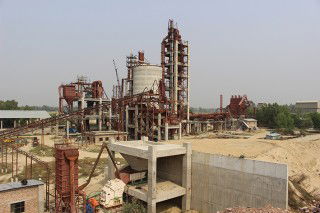Terra CO2, the US-based low-carbon materials company, says it has secured an additional US$124.5m in new equity capital in the latest round of funding.
Joining co-leads Breakthrough Energy Ventures, Eagle Materials, GenZero,and Just Climate, the round included major investment from Barclays Climate Ventures. Additional strategic investors to join the round include Prologis, the global logistics leader, building materials giant Cemex, and Siemens Financial Services.
In addition to the equity raise, Silicon Valley Bank, a division of First Citizens Bank, and Stifel Bank co-led the provision of a credit facility furnishing Terra additional financial flexibility.
The news follows an earlier announcement of US$82m in Series B funding in February and comes shortly after the US Department of Energy withdrew US3.7bn in federal funding for carbon capture projects at the start of June. In its statement, Terra CO2 noted that it's imperative that these solutions provide cost competitive advantages that can work within existing industries and infrastructures.
Advanced processing facility
The new capital will allow Terra to rapidly advance plans for a 218,000tpa advanced-processing facility in the Dallas-Forth Worth area. The funding will also support expanding Terra’s offices and industrial facilities, significantly growing the team, developing more shovel ready commercial projects, and further advancing new generations of cementitious products.
“Terra’s mandate is to deliver cementitious material solutions that the market would purchase solely based on cost and performance, even if there was no carbon benefit. The fact that Terra’s cementitious materials also offer significant carbon mitigation is an additional advantage for the built environment,” says Terra CEO, Bill Yearsley.
Terra’s patented supplementary cementitious materials (SCMs) process produces a high-performing, low-cost alternative to Portland cement and depleted traditional resources such as fly ash. Unlike other low-carbon SCMs, Terra says its OPUS products utilise inexpensive, abundant, and local feedstocks from existing aggregate mines, while working within existing industry infrastructure.
